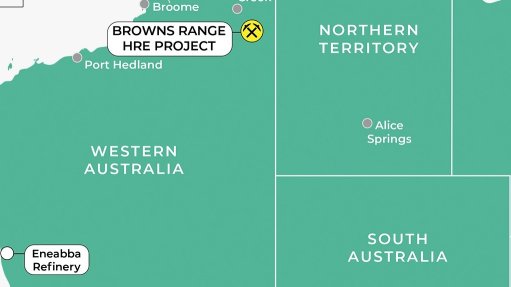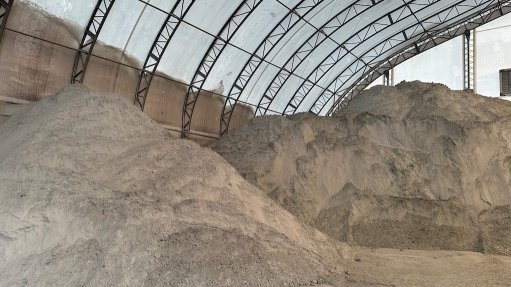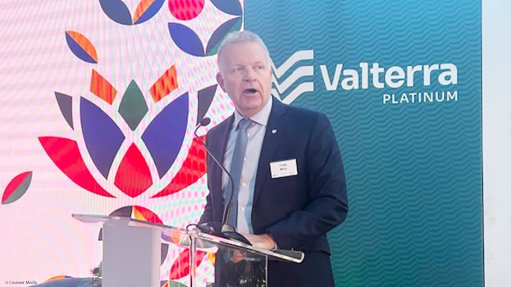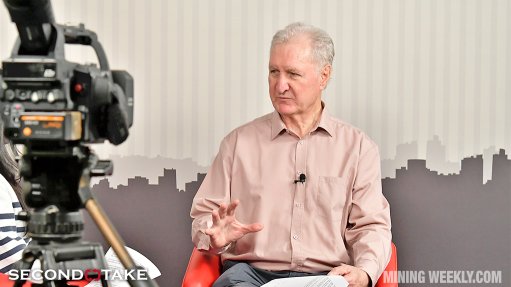Chinese economic slump not the precursor to Africa’s demise – Tshabalala

Standard Bank joint CEO Sim Tshabalala suggests Chinese slowdown may not signal Africa's swan song. Cameraperson: Nicholas Boyd. Editing: Lionel da Silva
While Africa-friendly China’s economic growth languishes at 25-year lows, Standard Bank joint CEO Sim Tshabalala has deviated from popular economic opinion which cautions of a devastating knock-on effect of the slowdown on African economies, arguing instead that the Asian powerhouse’s transition from an investment-led to a consumption-based growth model could rather spell good news for the continent in the longer term.
While acceding that short-term prospects painted a bleak picture, with the value of Africa-China trade down by as much as 25% year-on-year in 2015, he reminded delegates at the Frontier Advisory Deloitte Africa Outlook forum, in Johannesburg, that this followed 15 years in which trade between the parties had grown by over 2 000%, from around $5-billion in 2000 to about $220-billion in 2014.
“This trade explosion has changed both Africa and China profoundly. Many Chinese firms are now deeply invested in Africa, and increasingly look to this continent for growth opportunities that are getting harder to find at home.
“In 2014, for instance, Chinese sales to Africa increased by 14% – twice as fast as the overall growth rate of Chinese exports. Africa also presents attractive opportunities for the Chinese construction and manufacturing firms that are most vulnerable to China’s rebalancing. After all, a lot of Africa now looks like China did when it began its takeoff – lots of potential, but far too little infrastructure,” he commented during a keynote address last month.
Tshabalala further pointed to the possible upsides of a weaker yuan for African countries that remained heavily reliant on Chinese-manufactured goods and services.
Countries such as Ethiopia, Kenya and Mozambique had posted trade deficits in recent years, owing to high import volumes of Chinese capital goods.
“A weaker yuan will mean more heavy equipment and more infrastructure at a lower cost,” he asserted.
Moreover, China’s emerging consumption- based growth model could add 4.7%, or $181-billion, to Africa’s gross domestic product (GDP) by 2030, compared with China’s current growth path, with Kenya, Botswana and Nigeria the biggest winners, and only Zambia likely to experience a small net loss.
“Gloom about the effects of China’s slowdown on Africa can be overdone,” he reiterated.
Depreciation Silver Lining
Continuing with his bullish Africa outlook and turning his attention more specifically to South Africa, while acknowledging the discomfort emerging as a result of a recent dramatic currency depreciation, Tshabalala said an undermining of the rand’s international value had its benefits.
If appropriately managed, he argued, depreciation supported national competitiveness and made structural reform easier.
“South Africa actually handles depreciation very well. As the South African Reserve Bank has frequently stated, it doesn’t seek to manage the external value of the currency, preferring to use it as a shock absorber.
“A rapid depreciation is not a pleasant experience. But it is better than the alternatives, which would include very steep interest rate hikes or running down our international reserves – or both,” he held.
Countries that had tried to defend their currencies had burned through billions of dollars, which Tshabalala asserted could almost certainly have been better spent on infrastructure and public services.
Nigeria had, for example, spent about 2% of its GDP on shoring up the naira and Angola about 6% of GDP on the kwanza.
Further, in most African economies, depreciation had rather small effects on local inflation.
According to the banker, a 10% depreciation would, on average, cause domestic prices to rise by only 1.3%.
“In South Africa, the pass-through to inflation may be a bit higher – at about 1.6% a year for every 10% depreciation, or 6.4% as a result of the rand’s 40% depreciation last year.
“Even this dramatic fall is unlikely to create a lot of inflation – it’s likely to push up the consumer price index by only about 30 basis points. Therefore, if South Africa can avoid another period of frequent load-shedding or major strikes, depreciation has relatively low costs to the economy as a whole, gives exporters a boost, and may create opportunities to undertake longer-lasting reforms to our labour and product markets – it is always easier to operate on a relatively healthy patient,” remarked Tshabalala.
Inside Job
Taking a high-level view of the continent’s prospects for this year, he further argued that, as African populations became steadily healthier, better educated and more urbanised, African economies were increasingly able to generate their own internal growth.
World Bank research published in 2014 showed that overall economic growth in recent years in sub-Saharan Africa was largely due to increases in capital accumulation, driven by the inflow of foreign direct investment, the rising population share of the working-age population and total factor productivity growth, which the World Bank attributed to reduced political instability and economic diversification from agriculture to other sectors over the past two decades.
“In other words, the steps Africa has taken to get its own house in order – improved governance, major regulatory reforms in the rising-star countries, and better education and healthcare – are reaping rewards for the continent that are substantially independent from international commodity prices,” he said.
Tough Times
While presenting an optimistic appraisal of Africa’s long-term prospects, Tshabalala retained the view that the continent was unlikely to realise much economic improvement this year, describing it as “running out of policy space” for further monetary or fiscal expansion.
In fact, according to the International Monetary Fund and the World Bank, 34 of the 45 countries in sub-Saharan Africa were in a worse fiscal position now than they were in 2008.
On average, sub-Saharan Africa countries had a fiscal deficit of 1.7% of GDP in 2008, while the average fiscal deficit now stood at 3%.
“Admittedly, it’s hardly disastrous, but a 100% increase in the budget deficit over six years is not something one wants to repeat. In 21 of the 45 countries, the external balance is also weaker, with the average current account deficit having risen from 2.5% to 4% of GDP.
“Most worryingly, several of the larger economies – including South Africa’s – now have gross external financing needs in excess of 10% of GDP,” he maintained.
Domestically, Tshabalala noted, pundits would be looking to Finance Minister Pravin Gordhan’s February National Budget speech for firm evidence of fiscal discipline and a commitment to rebuilding the country’s competitiveness.
“However, as we all know, the National Treasury can only do so much to encourage structural change,” he said.
South Africa’s likely “dismal” growth rate of 0.7% this year was, Tshabalala advanced, the result of factors including declining commodity prices, weakening business and consumer confidence, likely rate hikes, the drought, policy uncertainty and the electricity constraint.
“To get South Africa out of the doldrums, we would need better prices, better rains – and to see the government as a whole pulling in the same direction, which is something that isn’t happening just yet,” he noted.
Article Enquiry
Email Article
Save Article
Feedback
To advertise email advertising@creamermedia.co.za or click here
Announcements
What's On
Subscribe to improve your user experience...
Option 1 (equivalent of R125 a month):
Receive a weekly copy of Creamer Media's Engineering News & Mining Weekly magazine
(print copy for those in South Africa and e-magazine for those outside of South Africa)
Receive daily email newsletters
Access to full search results
Access archive of magazine back copies
Access to Projects in Progress
Access to ONE Research Report of your choice in PDF format
Option 2 (equivalent of R375 a month):
All benefits from Option 1
PLUS
Access to Creamer Media's Research Channel Africa for ALL Research Reports, in PDF format, on various industrial and mining sectors
including Electricity; Water; Energy Transition; Hydrogen; Roads, Rail and Ports; Coal; Gold; Platinum; Battery Metals; etc.
Already a subscriber?
Forgotten your password?
Receive weekly copy of Creamer Media's Engineering News & Mining Weekly magazine (print copy for those in South Africa and e-magazine for those outside of South Africa)
➕
Recieve daily email newsletters
➕
Access to full search results
➕
Access archive of magazine back copies
➕
Access to Projects in Progress
➕
Access to ONE Research Report of your choice in PDF format
RESEARCH CHANNEL AFRICA
R4500 (equivalent of R375 a month)
SUBSCRIBEAll benefits from Option 1
➕
Access to Creamer Media's Research Channel Africa for ALL Research Reports on various industrial and mining sectors, in PDF format, including on:
Electricity
➕
Water
➕
Energy Transition
➕
Hydrogen
➕
Roads, Rail and Ports
➕
Coal
➕
Gold
➕
Platinum
➕
Battery Metals
➕
etc.
Receive all benefits from Option 1 or Option 2 delivered to numerous people at your company
➕
Multiple User names and Passwords for simultaneous log-ins
➕
Intranet integration access to all in your organisation



















